Biography
I work at Institute of Microelectronics, Chinese Academy of Sciences ![]() as an Associate Professor now in Beijing, China. If you are seeking any form of academic cooperation, please feel free to email me at weijianze@ime.ac.cn.
as an Associate Professor now in Beijing, China. If you are seeking any form of academic cooperation, please feel free to email me at weijianze@ime.ac.cn.
I obtained the Ph.D. degree from the University of Chinese Academy of Sciences under the supervision of Prof. Zhenan Sun in 2022. During my doctoral studies, I was affiliated with the Center for Research on Intelligent Perception and Computing (CRIPAC), National Laboratory of Pattern Recognition (NLPR), Institute of Automation, Chinese Academy of Sciences (CASIA) ![]() .
.
My research interest includes biometrics, spiking neural networks, and brain-like intelligence.
I have published 15 papers 
🔥 News
- 2025.05: 🎉 One journal paper was accepted to IEEE TIP Dual Retrieval Queries Fine-Tuning for Composed Image Retrieval
- 2025.05: 🎉 One journal paper was accepted to IEEE TIFS Uncertainty-Aware Bilateral Transformer for Accurate and Reliable Iris Segmentation
- 2024.12: 🎉 One journal paper was accepted to IEEE Signal Processing Letters IrisFormer A Dedicated Transformer Framework for Iris Recognition
- 2024.06: 🎉 One journal paper was accepted to IEEE TIFS Multi-Faceted Knowledge-Driven Graph Neural Network for Iris Segmentation
- 2024.05: 🎉 One journal paper is accepted by IEEE T-MM.
- 2023.07: 🎉 One paper is accepted by IJCB.
- 2023.05: 🎉 One paper is accepted by TCSVT (IF: 8.4).
- 2022.07: I join Institute of Microelectronics, Chinese Academy of Sciences as an Assistant Professor.
📝 Publications
Biometric segmentation
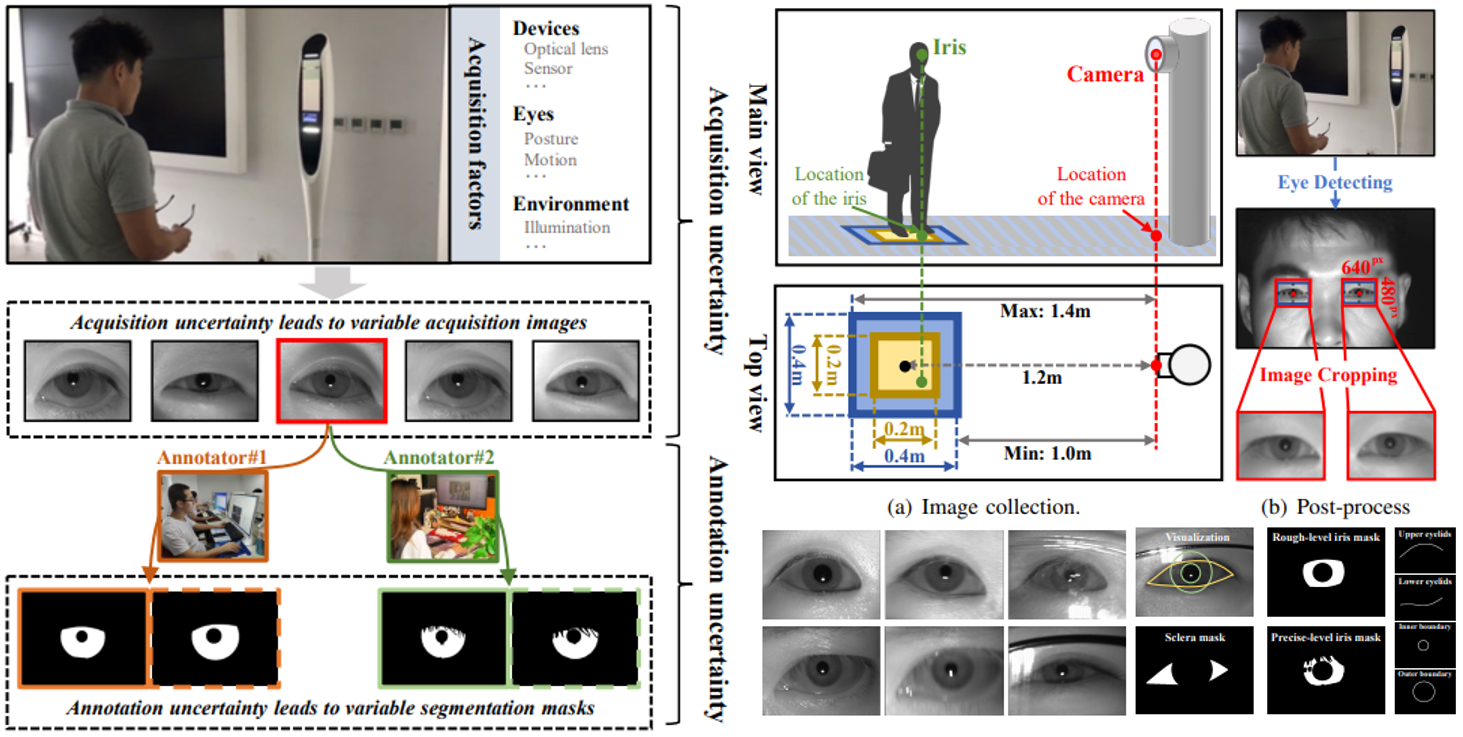
Uncertainty-Aware Bilateral Transformer for Accurate and Reliable Iris Segmentation
IF: 6.8
Jianze Wei; Xingyu Gao; Yunlong Wang; Ran He; Zhenan Sun
- UTIris, a new iris dataset with high acquisition and annoation uncertainties, is built, and we provide rich annotations including two levels (rough- and precise-levels) of binary maps for iris masks, the circles of iris inner and outer boundaries, and curves of upper and lower eyelids to support future research on it.
- A bilateral self-attention module is proposed to capture visual and spatial relationships explicitly. Based on the module, a new backbone named BiTrans is designed to reduce the negative influence of the acquisition uncertainty in iris segmentation.
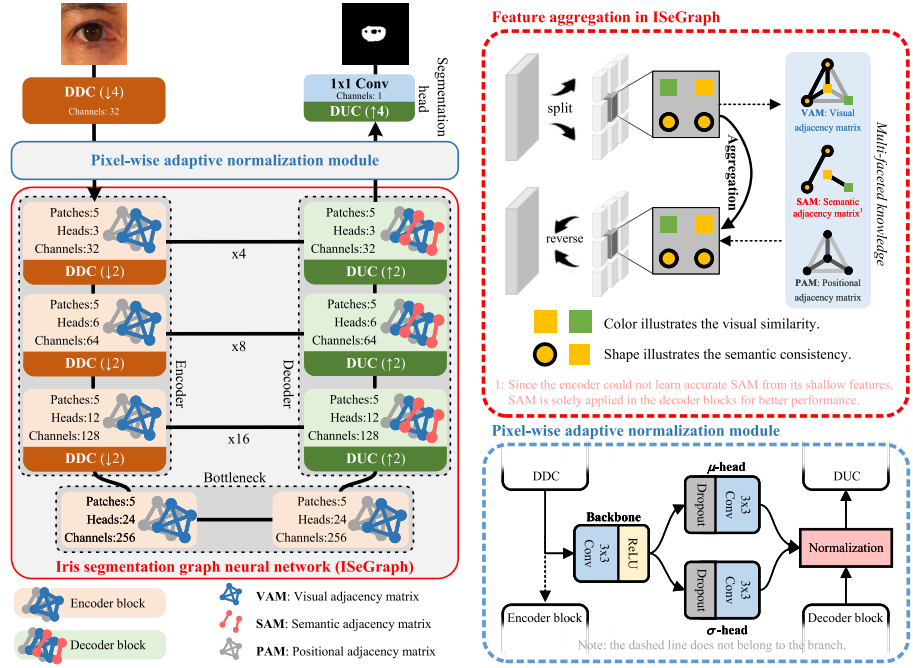
Multi-Faceted Knowledge-Driven Graph Neural Network for Iris Segmentation
IF: 6.8
Jianze Wei; Yunlong Wang; Xingyu Gao; Ran He; Zhenan Sun
- A graph-based method with U-net structure for iris segmentation.
- Summary: This paper utilizes the multi-faceted knowledge of the image, including including visual similarity, positional correlation, and semantic consistency, to construct self-adaptive relationships for accurate iris segmentation.
Biometric recognition
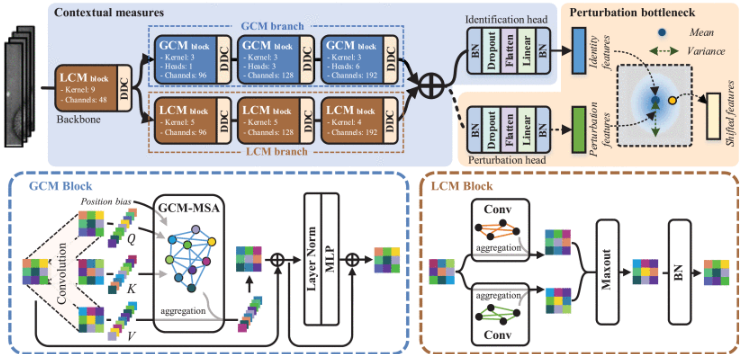
Contextual Measures for Iris Recognition
IF: 6.8
Jianze Wei, Yunlong Wang, Huaibo Huang, Ran He, Zhenan Sun, Xingyu Gao
- The first Transformer model for iris recognition.
- Summary: the paper integrates the advantages of visual Transformer and CNN, and proposes contextual measures (CM). The proposed CM regards each iris region as a potential microstructure and models the correlations between them for iris recognition.
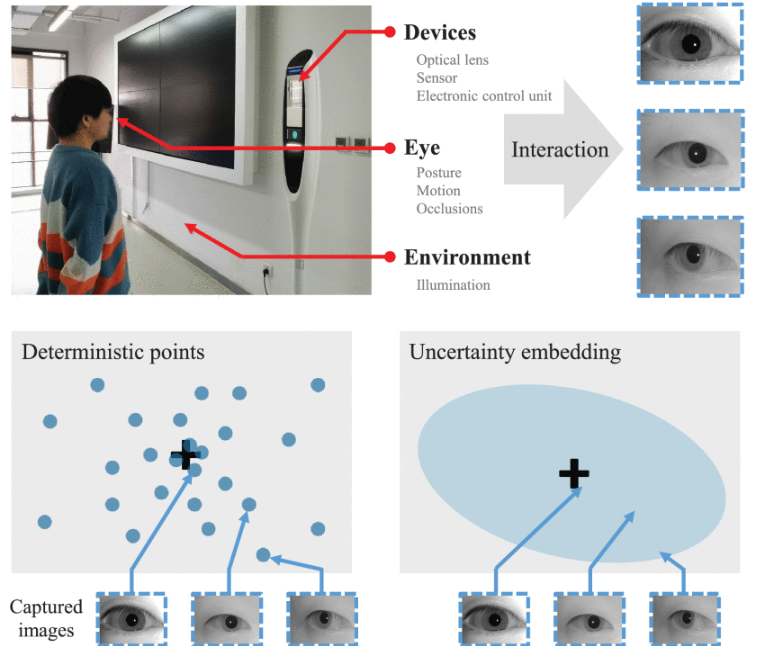
Towards More Discriminative and Robust Iris Recognition by Learning Uncertain Factors
IF: 6.8
Jianze Wei, Huaibo Huang, Yunlong Wang, Ran He, Zhenan Sun
- Summary: the paper represents an iris image using a probabilistic distribution rather than a deterministic point (binary template or feature vector) that is widely adopted in iris recognition methods.
- Extension: the proposed representation augments input data in the feature level, and it is employed in Contrastive Uncertainty Learning for Iris Recognition with Insufficient Labeled Samples
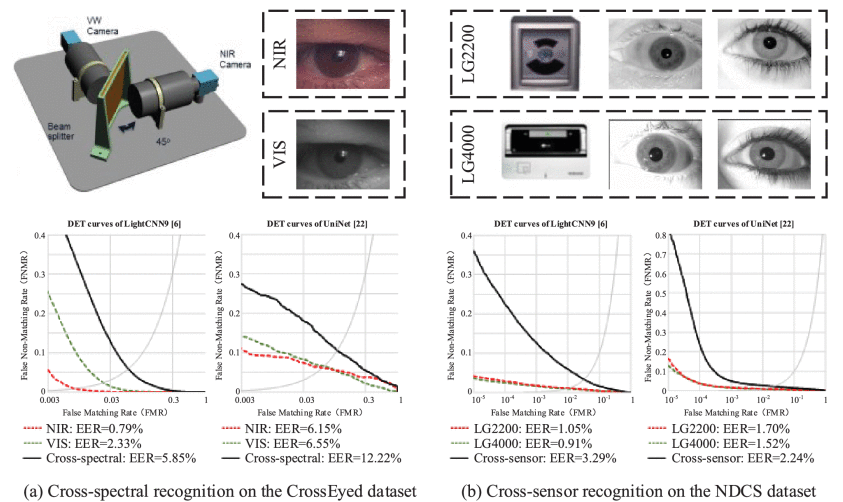
Cross-Spectral Iris Recognition by Learning Device-Specific Band IF:8.4
Jianze Wei, Yunlong Wang, Yi Li, Ran He, Zhenan Sun,
- Summary: the paper proposes a Gabor Trident Network (GTN) to narrow the distribution gap between near-infrared (NIR) and visible (VIS) images. GTN first utilizes the Gabor function’s priors to perceive iris textures under different spectra, and then codes the device-specific band as the residual component to assist the generation of spectral-invariant features.
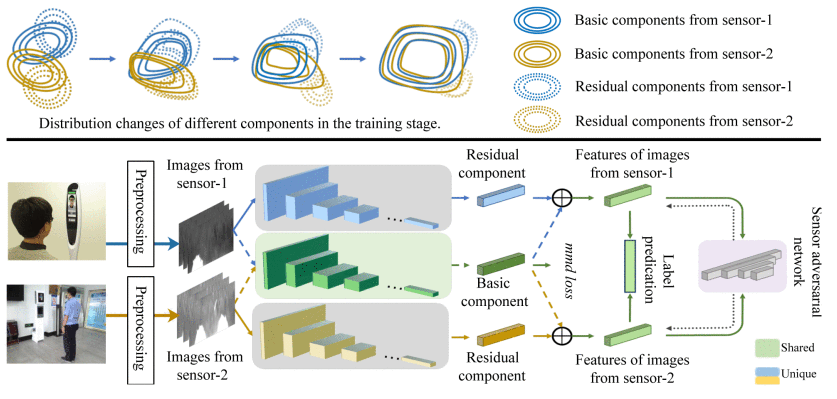
Cross-sensor Iris Recognition Using Adversarial Strategy and Sensor-specific Information EI, Oral
Jianze Wei, Yunlong Wang, Xiang Wu, Zhaofeng He, Ran He, Zhenan Sun
- Summary: the paper propose Cross-sensor iris network (CSIN) by applying the adversarial strategy and weakening interference of sensor-specific information.
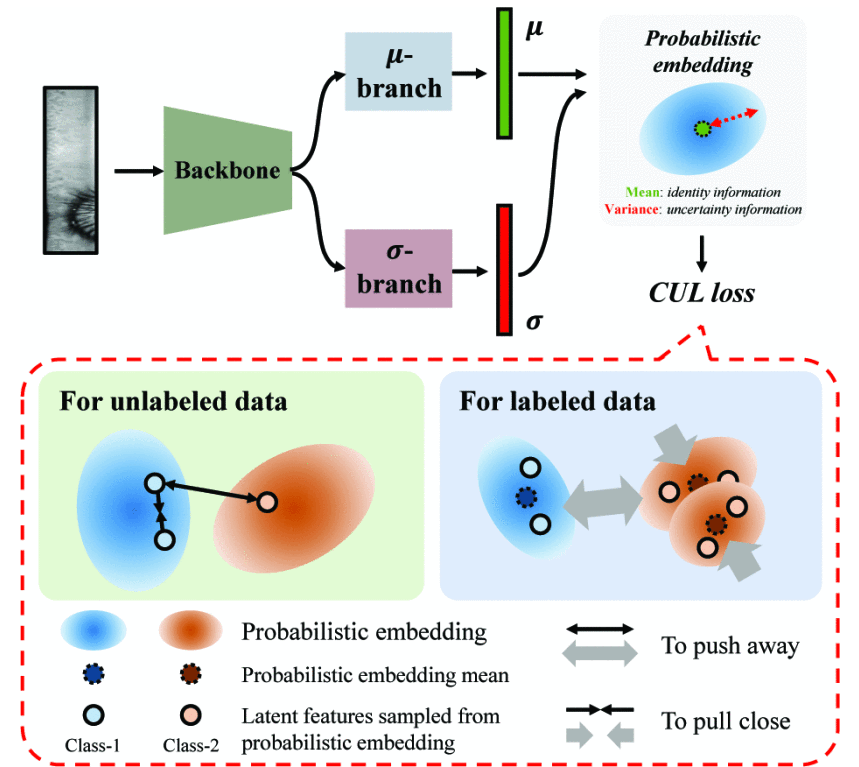
Contrastive Uncertainty Learning for Iris Recognition with Insufficient Labeled Samples CCF-C, Oral
Jianze Wei, Ran He, Zhenan Sun
- The first work for both unsupervised and semi-supervised iris recognition method.
- Summary: the paper explores the uncertain acquisition factors and adopts a probabilistic embedding to represent the iris image, then it utilizes this probabilistic representation to generate virtual positive and negative pairs.
Accurate ROI localization and hierarchical hyper-sphere model for finger-vein recognition, Jinfeng Yang, Jianze Wei, Yihua Shi
Transfer learning
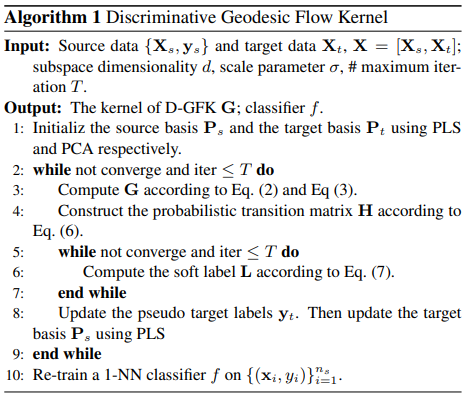
Learning Discriminative Geodesic Flow Kernel for Unsupervised Domain Adaptation CCF-B, Oral
Jianze Wei, Jian Liang, Ran He, Jinfeng Yang
- Summary: the paper extends the classic geodesic flow kernel method by leveraging the pseudo labels during the training process to learn a discriminative geodesic flow kernel for unsupervised domain adaptation.
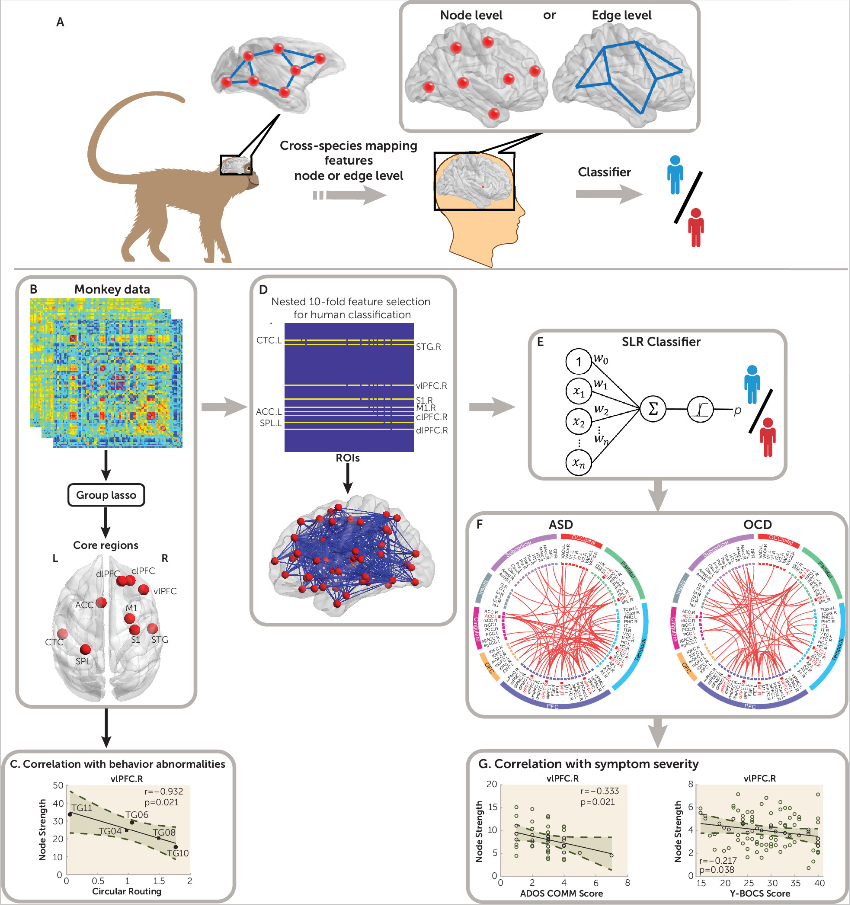
Yafeng Zhan, Jianze Wei (co-first), Jian Liang, Xiu Xu, Ran He, Trevor W Robbins, Zheng Wang
- Summary: the paper develops a new group lasso method to search the share egg featurs between humans and monkeys for ASD diagnosis. Specifically, our method groups all connection features into 94 groups according to their connected brain regions. Then, a group lasso is employed and elaborately set to find the effective features. Finally, a classifier model trained on monkey data is leveraged to predict the diagnostic results of ASD.
- Academic Impact: ESI Highly Cited Paper.
Image retrieval

Deep Mutual Distillation for Unsupervised Domain Adaptation Person Re-Identification
IF: 8.4
Xingyu Gao; Zhenyu Chen; Jianze Wei; Rubo Wang; Zhijun Zhao
- deep mutual distillation (DMD) to generate reliable pseudo-labels for unsupervised domain adaptation person re-identification.
- Summary: the paper proposes a deep mutual distillation (DMD) to generate reliable pseudo-labels for UDA person re-ID. The proposed DMD applies two parallel branches for feature extraction, and each branch serves as the teacher of the other to generate pseudolabels for its training.
Deep Learning to Hash with Application to Cross-View Nearest Neighbor Search, Xingyu Gao; Zhenyu Chen; Boshen Zhang; Jianze Wei
发明专利
基于采集不确定性解耦的鲁棒虹膜识别方法,孙哲南; 卫建泽; 王云龙
基于设备独有性感知的异质虹膜识别方法,孙哲南; 卫建泽; 王云龙
基于Resize小波和SSLM模型的静脉识别方法,杨金锋; 卫建泽; 师一华
💰 Foundations
- 2024.01 - 2026.12, 国自然青年基金项目, 主持
- 2024.08 - 2025.01, 博士后基金特别资助, 主持
- 2023.08 - 2025.01, 博士后基金面上项目, 主持
- 2025.01 - 2028.12, 国自然基金面上项目,技术负责人
- 2024.01 - 2027.12, 国自然基金面上项目, 技术负责人
- 2022.10 - 2024.09, 某军口项目, 子课题负责人
- 2022.08 - 2027.08, 科技创新2030-脑科学与类脑研究重大项目, 参与
🏅 Honors and Awards
- 北京科协青年人才托举工程项目入选者
- 北京市优秀毕业生
🎓 Educations
- 2018.09 - 2022.06, Ph.D, University of Chinese Academy of Sciences, Beijing
- Studied in the Institute of Automation, Chinese Academy of Sciences (CASIA)
- Supervised by Prof. Zhenan Sun and Prof. Ran He; thesis title: Research on lris lmage Preprocessing and Recognition forOpen-world Scenario (- *2015.09 - 2018.06, Master, Civil Aviation University of China, Tianjin) (- 2011.09 - 2015.06, Undergraduate, Civil Aviation University of China, Tianjin*)
💬 Activities and services
- 2023.07-present, Guest editor, Electronics SI:Biometric Recognition: Latest Advances and Prospects.
- 2021.08.04 - 2021.08.07, long oral presentation, Contrastive Uncertainty Learning for Iris Recognition with Insufficient Labeled Samples, IEEE International Joint Conference on Biometrics, Online
- 2019.08.23-2019.08.26, long oral presentation, Cross-sensor iris recognition using adversarial strategy and sensor-specific information, IEEE 10th International Conference on Biometrics Theory, Applications and Systems, Tampa, Florida, the U.S.
- 2018.01.29-2018.02.02, Oral, IAPR/IEEE winter school on biometrics, Shenzhen, China.
💻 Internships
- 2018.04 - 2018.06, China Academy of Civil Aviation Science and Technology, Beijing.
- 2017.03 - 2018.03, Institute of Automation, Chinese Academy of Sciences, Beijing.
🧑 Students
张宝斌 硕士 2020-2023 电子信息 基于语境关联分析的快速视频字幕生成方法研究
杨 涛 硕士 2020-2023 电子信息 基于多模态融合与知识增强的虚假新闻检测方法研究
陈项中 硕士 2021-2024 电子信息 基于知识融合和先验引导的低光照图像增强方法研究
何明泽 硕士 2024-至今 电路与系统 基于因果推断的域行人重识别方法研究
唐雯月 博士 2022-至今 微电子学与固定电子学 基于多源知识融合提示的组合图像检索



